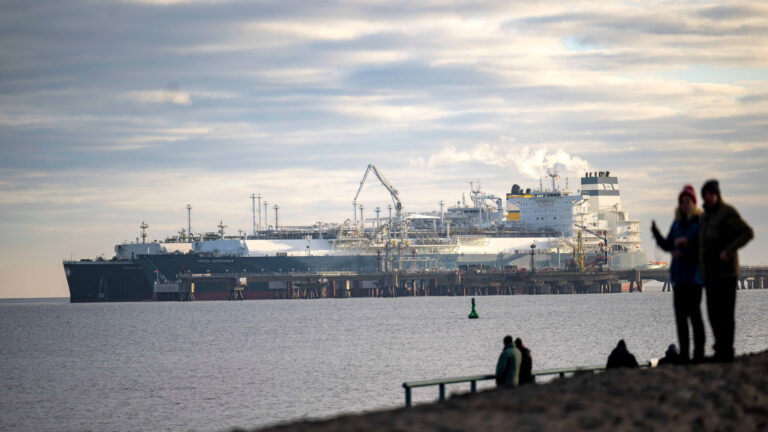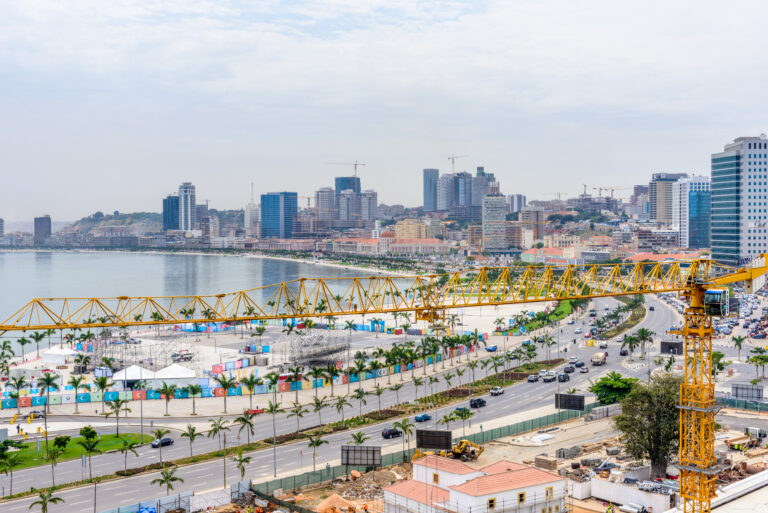(This article has been translated from French.)
A natural gas liquefaction and transportation infrastructure project may see the light of day in Quebec. The project, which would export natural gas from Western Canada to South America, Europe and Asia, is comprised of two elements. The first, led by Gazoduq, consists of building a gas pipeline from Eastern Ontario to the Saguenay. The second, Énergie Saguenay, is the construction of a natural gas liquefaction plant in the Port de Saguenay referred to as GNL Québec, from which natural gas will be shipped to foreign markets.
The GNL Québec project would have enormous repercussions. It would cause disruptions along the length of the pipeline route, which will cross protected areas and rivers and will affect numerous First Nations communities. The supertankers that would transport the gas would also destabilize beluga habitats and those of other endangered species living in the Saguenay Fjord. What’s more, the project could wipe out in a single year nearly all the greenhouse gas (GHG) emissions reductions that Quebec has achieved since 1990.
Given this context, it’s important to set the record straight about natural gas, and explain why it cannot be considered a transitional energy source.
The methane problem
There is a lot of messaging about the potential of natural gas as a “cleaner” resource than other fossil fuels, such as coal or oil. And indeed, gas use does produce fewer CO2 emissions.
However, CO2 is not the only gas that can heat up the planet, nor is it the most potent. Over a 20-year window, methane has a planetary warming potential 84 times greater than CO2. Since natural gas is composed almost entirely of methane, the emissions caused by gas leaks, which occur at every step of the production process (from drilling to distribution), are particularly dangerous. As it is extremely difficult to measure these fugitive emissions, there is no scientific consensus as to their frequency. There is, however, agreement that no more than 3 percent of the gas can leak for natural gas to have a smaller impact than coal.
In Quebec, Premier François Legault has perpetuated the myth of “clean” natural gas while defending the GNL Québec project: “You have to remember: this is a gas pipeline – gas, not oil.” Although the GNL Québec project targets export markets, the gas industry, in an effort to paint the project as socially acceptable, likes to tout the “environmental advantages” of natural gas for the markets the project would serve.
However, developing a fossil fuel is an extremely risky proposition from both a financial and environmental standpoint, because Canada has committed to limiting global warming to 1.5°C in order to avoid the most catastrophic effects of climate change.
A substitute for dirty energy?
The gas industry argues that in foreign markets, gas will replace high GHG emitting energy sources such as coal, oil or local natural gas sources. But this is a very optimistic assumption, and one that is impossible to prove.
Three different scenarios are possible when determining the effects of adding a Canadian supply of natural gas to foreign markets:
- Addition: imported natural gas is simply added to the energy sources already available, which increases global energy consumption;
- Substitution with a rebound effect: imported natural gas replaces other energy sources, which are then moved to other markets. The environmental impact would therefore be similar to that of the addition scenario;
- Net substitution: imported natural gas replaces other higher carbon-intensive energy sources, for which the demand lessens.
The only scenario where an overall reduction in GHG emissions is possible is therefore net substitution. In both other scenarios, emissions resulting from the use of Canadian natural gas abroad would simply be added to existing emissions.
So, how do we know whether a net substitution scenario applies? That depends on the quantity of natural gas exported and the characteristics of the export market. In the case of the GNL Québec project, the export contracts have yet to be signed. The environmental impact study carried out by Énergie Saguenay simply states that the target markets are Europe (OECD countries), Brazil and Asia. However, even once these markets are confirmed, uncertainty will remain as to the scenario that will unfold.
There is no guarantee, therefore, that exporting natural gas will lead to marginal gains in GHG reductions. And considering the current climate emergency, we must break from the status quo and implement ambitious public policies that will reduce our energy consumption, especially when it comes to fossil fuels.
Renewable energy
To reduce the share of fossil fuels from our energy mix, we need an increased global supply of renewable energy. The International Renewable Energy Agency (IRENA) estimates that in a number of countries, renewables will account for over 60% of total final energy consumption by 2050.
In this context of energy transition, the natural gas exported by the GNL Québec project would increasingly rival hydroelectric, wind and solar power in export markets.
The policies needed to curb climate warming will also dampen the demand for natural gas. In a scenario where global warming is below 2°C (the signatories to the Paris Agreement are committed to limiting it to 1.5°C), the International Energy Agency is forecasting that global natural gas demand will peak toward the end of the 2020s before dropping after 2030, and will eventually fall below 2000 levels in 2050.
In the face of this projected decline, we must recognize that exports of Canadian natural gas are at odds with the evolution toward an energy transition.
Investing in the future
Exporting Canadian natural gas in no way guarantees marginal gains when it comes to GHG reductions, and is incompatible with the changes that are essential to the energy transition. We must also ask ourselves about the economic impact of investing in such an industry.
There is a risk that the massive investment required to build a natural gas export infrastructure ― pipelines, liquefaction plants, marine terminals ― ends up as stranded assets, because the useful life necessary to make these projects cost-effective is not guaranteed. Canada wants to build pipelines and liquefaction plants while knowing full well that to avoid catastrophic climate warming, it will be forced to decommission them before the end of their useful life. So why not, as a society, invest right now in energy systems that we know are compatible with the world of tomorrow?
Said Bill McKibben, founder of 350.org, an international organization dedicated to combatting climate change: “The climate movement’s biggest failure has been its inability to successfully make the case that natural gas is not a clean replacement for other fossil fuels.”
Let’s not fall for the myth that natural gas is a transitional energy source. Instead, let’s leverage the expertise, labour force and renewable resources unique to Quebec to become an uncontested global energy transition leader. After all, that is where we have a competitive advantage!
Photo: Shutterstock by BNK Maritime Photographer
Do you have something to say about the article you just read? Be part of the Policy Options discussion, and send in your own submission. Here is a link on how to do it. | Souhaitez-vous réagir à cet article ? Joignez-vous aux débats d’Options politiques et soumettez-nous votre texte en suivant ces directives.












